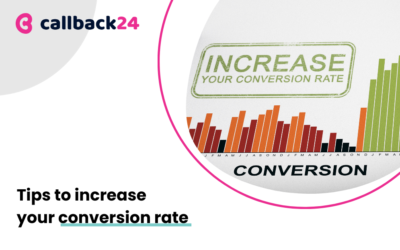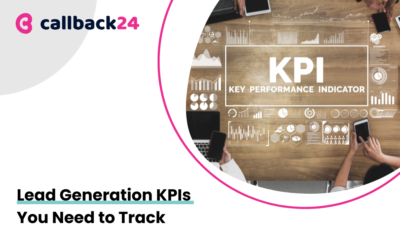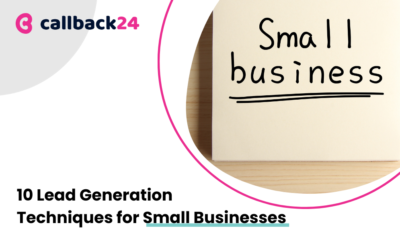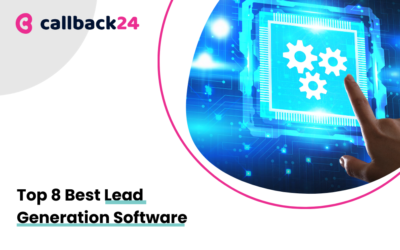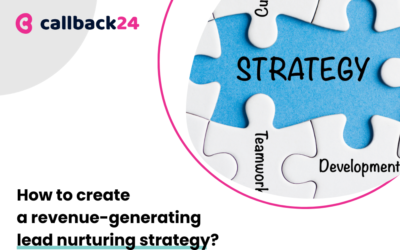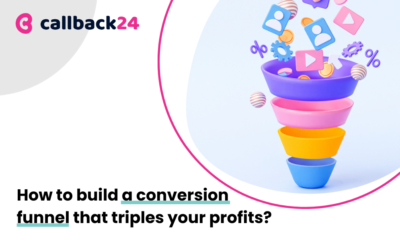TL;DR
- Leads are potential customers who have shown interest in a company’s products or services. Lead generation is the process of identifying and cultivating potential customers. There are several ways to generate leads, including creating compelling content, using social media platforms, and offering something of value in exchange for contact information.
- It is important to track leads because it allows businesses to see which marketing campaigns are generating the most leads and optimize future marketing efforts. By tracking various interactions and data points related to each lead, businesses can better understand their needs and preferences.
- There are many different ways to track leads in a CRM system, such as contact information, communication history, purchase history, and demographic information.
- Marketing companies use a variety of methods, including online advertising, direct mail, telemarketing, and print advertising. Ecommerce businesses can use paid ads, social media, email marketing, and word of mouth.
- Callback24 helps in a lead generation thanks to its features. You won’t lose any customers thanks to calling customers easily and quickly back. Also, the integration with Google Analytics allows knowing where the call was from and which marketing campaign you need to improve.
Lead Generation has been changing significantly over the past year, however, it remains an essential part of a successful company building relationships with prospects and ultimately closing the deal. Lead generation is important for B2B business, no matter their size and industry. Lead generation could be useful for some industries for high-interest purchases where the consumer is less likely to buy directly from the Web and may require nurturing. This article is about what lead generation is and how to make it good.
What is a lead?
Generally speaking, leads are all people indicating an interest in a company’s products or services. Leads usually hear from businesses or organizations after they have opened communication. Take a quick online quiz to find out how to keep your car clean. A day or two ago, a company sent a message in which it asked for help in taking care of a driver’s vehicle.
What is lead generation?
Lead generation is the process of identifying and cultivating potential customers for a business’s products or services. It is a key element of any marketing strategy and can be accomplished through a variety of means, including online advertising, direct mail, print advertising, trade shows, and personal selling.
The most important part of lead generation is the ability to target your audience. Without a targeted audience, your efforts will be wasted on leads that are not interested in your product or service. There are several ways to target your audience, including using demographic information, geographic location, and even interests.
Once you have targeted your audience, it is important to generate quality leads. This can be done through several means, including providing valuable content, offering freebies, and conducting contests or sweepstakes.
Lead generation is an essential part of any marketing strategy. By taking the time to identify and cultivate customers, you can ensure that your business can make sales and grow.
How to generate leads?
Generating leads can be a tough process, but by utilizing some key methods you can get the leads rolling in. Here are four effective ways:
- Create compelling content
This is perhaps the most important step in generating leads. If you create content that is interesting and informative, people will want to read it. Furthermore, if your content is shareable, people will share it with their friends and followers, widening your reach even further.
- Use social media platforms
Social media is a powerful tool for generating leads. By sharing your content on social media sites such as Facebook and Twitter, you can reach a large audience quickly and easily. Additionally, using social media allows you to target specific groups of people, increasing the chances that they will be interested in what you have to offer.
- Use lead capture forms
Lead capture forms are a great way to collect contact information from potential leads. By placing a form on your website or blog, you can easily collect names, email addresses, and other important information. This information can then be used to follow up with leads and turn them into customers.
- Offer something of value
One of the best ways to is to offer something of value in exchange for contact information. This could be a free report, an eBook, or even just a discount on your products or services. By offering something of value, you increase the chances that people will give you their contact information, which you can then use to follow up with them.
What is lead tracking?
Lead tracking is the process of monitoring and managing customers, or “leads.” In most cases, lead tracking is used by businesses to generate sales and grow their customer base.
There are several different ways to track leads, but the most common method is through the use of lead management software. This type of software allows businesses to collect and store data about potential customers, as well as track the progress of each lead through the sales process.
Why is it important to track leads?
Lead tracking software can be extremely helpful for businesses in several ways. First, it allows businesses to see which marketing campaigns are generating the most leads. This information can be used to optimize future marketing efforts and ensure that money is being spent in the most effective way possible.
Second, lead tracking software can help businesses to keep track of their sales pipeline and see which leads are the most likely to convert into customers. This information can be used to prioritize sales efforts and focus on the leads that are most likely to result in a sale.
Finally, lead tracking software can help businesses to stay organized and efficient. By keeping all data about customers in one central location, businesses can avoid Duplicate efforts and make sure that each lead is receiving the appropriate level of attention.
Lead tracking is an essential tool for any business that is looking to generate sales and grow its customer base. By using lead management software, businesses can optimize their marketing efforts, prioritize their sales pipeline and improve the customer journey.
How to track where leads come from?
There are a few ways to track where your leads come from. The most common is to use a lead tracking system, which can be either software or hardware-based. This system assigns a unique ID to each lead, so you can see where they came from and what interactions they had with your sales team.
Another way to track leads is through manual input into a CRM or other database. This requires more work on the part of sales and marketing teams but can provide more detailed data.
Finally, you can ask customers how they heard about your product or service. This method is not always accurate but can give you some insights into where your best leads are coming from.
How to make lead generation strategy?
- Define your target audience
Who are you trying to reach with your products or services? You need to understand who your ideal customer is, it will be difficult to develop an effective lead generation strategy.
- Develop a compelling offer
What can you provide that will pique the interest of your audience? Your offer should be something that solves a problem or meets a need that your ideal customer has.
- Create an effective lead capture system
Once you have defined your target audience and developed a compelling offer, you need to create a system for capturing leads. This could include a landing page on your website with an opt-in form, or a free report or e-book that is available for download in exchange for contact information.
- Nurture your leads
Once you have captured leads, it is important to nurture them through the sales process. This could include sending targeted emails, providing additional resources, or setting up a call to discuss their needs further. By nurturing your leads, you will be more likely to convert them into paying customers.
The inbound lead generation process
The main way of lead generation is inbound marketing. Inbound marketing is all about creating content that draws people in and gets them to take some kind of action, such as subscribing to a newsletter or downloading an eBook. This is usually done through SEO-optimized blog posts, helpful infographics, and targeted social media posts.
Inbound marketing is usually the best option for businesses that are looking to build long-term relationships with their customers.
Lead generation strategies
There are several effective lead generation strategies that businesses can use to attract new customers. Some common methods include online advertising, search engine optimization (SEO), and social media marketing.
Businesses need to carefully select the right mix of strategies to maximize their chances of success. Lead generation is a complex process, and there is no one-size-fits-all solution. The most effective lead generation campaigns are tailored to the specific needs of the business and its target market.
- Online advertising is one of the most common lead generation strategies. Businesses can use a variety of online channels to reach customers, including search engines, social media platforms, and email newsletters.
- SEO is another important lead generation strategy. businesses can use SEO to improve their visibility on search engine results pages (SERPs), which makes it more likely that customers will find them when they are searching for products or services related to their business.
- Social media marketing is another effective lead generation strategy. Businesses can use social media platforms to connect with customers and build relationships with them.
- Email newsletters are another common lead generation strategy. Businesses can use email newsletters to stay in touch with customers and keep them updated on new products or services.
- Lead generation is a complex process, and businesses need to carefully select the right mix of strategies to maximize their chances of success. The most effective lead generation campaigns are tailored to the specific needs of the business and its target market.
What is a lead generation pipeline?
A lead generation pipeline is a system that helps businesses identify and nurture customers. The pipeline typically starts with marketing activities that generate leads, followed by lead qualification and nurturing processes. Once a lead is qualified, they are handed off to the sales team for further follow-up.
The goal of a lead generation pipeline is to shorten the sales cycle and increase conversion rates by providing quality leads that are more likely to close. By nurturing leads throughout the pipeline, businesses can build relationships with customers and better understand their needs. This helps sales teams close deals faster and makes it more likely that leads will convert into paying customers.
Lead generation pipelines can be complex, but they don’t have to be. The most important thing is to have a system in place that works for your business. There are a number of different software platforms that can help you build a lead generation pipeline, so it’s important to do your research and find the one that best fits your needs.
Once you have a lead generation pipeline in place, you’ll need to consistently generate leads and send them through the pipeline. The best way to do this is to create a solid marketing plan that includes a mix of inbound and outbound marketing activities.
The most important thing to remember about lead generation pipelines is that they require a consistent effort to work. You can’t just set it and forget it. You need to actively generate leads and move them through the pipeline on a regular basis. But if you do, you’ll reap the rewards in the form of increased sales and a shorter sales cycle.
How is pipeline generation measured?
There are a few different ways to measure pipeline generation. The most common is to track the number of new leads that you add to your pipeline each month. You can also track the conversion rate from each stage of the pipeline, which will give you an indication of how effective your pipeline generation efforts are.
Another way to measure pipeline generation is to track the value of each lead. This is the total amount of money that a lead is worth to your business over the course of their customer lifetime. This number can be tricky to calculate, but it’s important to track because it gives you an indication of how much each lead is worth to your business.
Pipeline generation is an important part of growing a business. By tracking the number of new leads that you’re adding to your pipeline, you can ensure that you’re constantly growing your business. Additionally, by tracking the value of each lead, you can ensure that you’re focused on generating high-quality leads that will convert into customers.
What a lead generator does?
A lead generator is a type of marketing professional who helps businesses generate new leads. These professionals typically work with marketing and sales teams to create and implement lead generation campaigns. Lead generators may also work with third-party firms to help identify potential leads.
What types of methods use lead generators?
Lead generators typically use a variety of methods, such as cold calling, email marketing, search engine optimization (SEO), and content marketing. They may also use social media to connect with potential leads and build relationships. In some cases, lead generators may also provide lead nurturing services, which involve following up with leads after they have been generated.
The goal of lead generation is to generate more interest in a company’s products or services, ultimately leading to more sales. Lead generation is a key component of any successful marketing strategy. By working with a lead generator, businesses can ensure that their marketing efforts are targeted and effective.
What is lead generation in digital marketing?
Lead generation in digital marketing refers to the process of attracting and converting strangers into leads, usually through some kind of offer or trade.
Lead generation might involve providing a free e-book in exchange for an email address or offering a discount in exchange for a lead’s contact information. The goal of lead generation is always the same: to get someone from being a complete stranger to become a warm lead who is interested in your product or service.
There are a lot of different digital marketing channels that can be used for lead generation, including content marketing, search engine optimization, pay-per-click advertising, and social media marketing. Which channels you use will depend on your budget, your resources, and your target audience.
However, one thing that all lead generation strategies have in common is that they require some kind of offer or value proposition to attract leads. Without something to offer, you’ll have a hard time generating leads online.
So, if you’re thinking about starting a lead generation campaign, the first step is to come up with a great offer that your target audience will find irresistible. Once you have that, you can start planning your lead generation strategy and choosing the right channels to reach your audience.
How do marketing companies generate leads?
Some common methods include online advertising, direct mail, telemarketing, and print advertising.
Online advertising is a broad term that covers a range of activities, including banner ads, pay-per-click (PPC) ads, and social media marketing. Direct mail is a more traditional marketing method that involves sending marketing materials through the mail.
Telemarketing is a type of lead generation that involves making sales calls to potential customers. Print advertising is another option for marketing companies, and it can include things like placing ads in newspapers or magazines.
Lead generation in eCommerce
There are a lot of ways to lead generation for your eCommerce business. You can use paid ads, social media, email marketing, and even good old-fashioned word of mouth. But which method is the best for generating by your sales team quality leads that will actually convert into customers? Well, that depends on your business and your goals.
If you’re looking for quick results, then paid to advertise is probably your best bet. But if you’re more interested in building long-term relationships with potential customers, then organic methods like social media and email marketing may be more effective.
Ultimately, the best lead generation strategy is the one that works best for your business. So experiment with different methods and see what works best for you.
One thing to keep in mind is that lead generation is only one part of the equation. Once your sales team generated a lead, they still need to nurture it and turn it into a paying customer.
How Callback24 can help you with lead generation?
Thanks to Callback24 you won’t miss any inbound calls and you won’t lose any leads because you have the possibility to call them quickly and easily back and if necessary your customers can make an appointment to talk to you at a time suitable for them.
In addition, thanks to the integration with Google Analytics, your sales team will have full access to information about where customers are calling from and which marketing campaign you need to improve.
Summary
What is lead generation in simple words? The lead generation process is about attracting and converting strangers into leads, or potential customers. It’s a fundamental part of any business’ growth strategy, as it allows you to reach out to new people and turn them into customers or clients. The goal of lead generation is simple: to get more people interested in what you’re selling.
Lead generation is crucial in running a business. It is good to have a solid strategy for a lead generation campaign. You have to change leads in potential customers and encourage them to stay with you. You should give them something special from you and show them that they are important to you.



